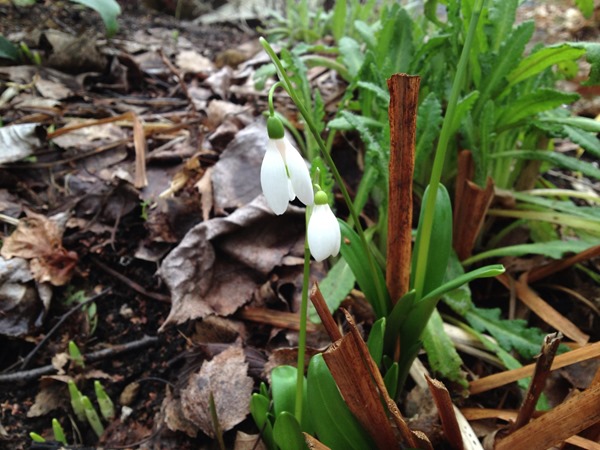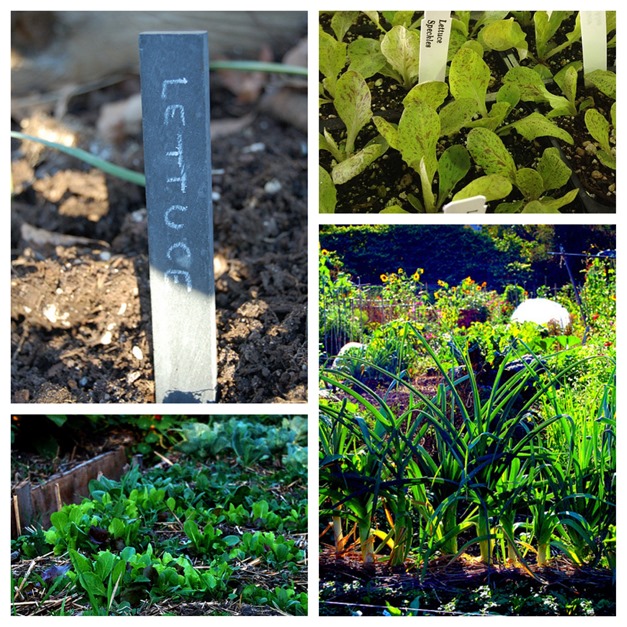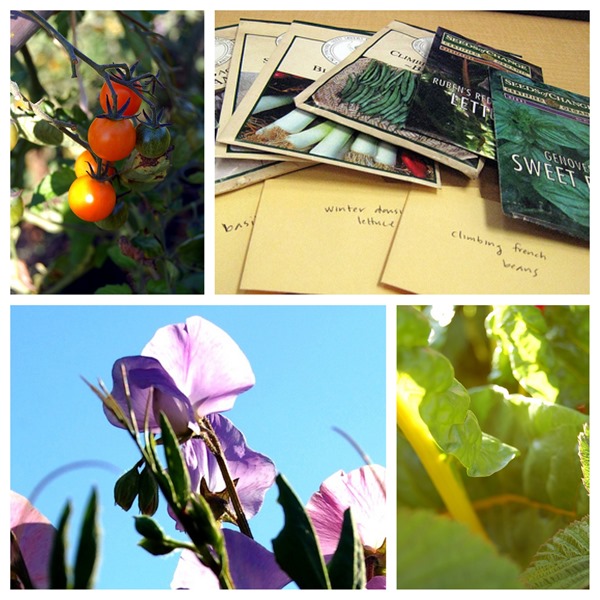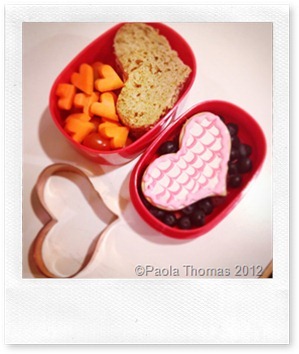I asked my great friend Nazila Merati to write a guest blog post for you while I was away sunning myself in Palm Springs.
Nazila is a very good friend to have. Throughout the summer months she delivers an endless supply of beautiful fresh produce grown on one of her two allotments (p-patches) and in winter she delivers cookies and homemade rocky road chocolates made with her own homemade marshmallows. See what I mean?
Since she is one of the most green-fingered (green-thumbed, I believe you crazy Americans say) people I know, I asked her to share her thoughts on easy vegetable crops to grow here in the Pacific Northwest. Since the climate here is very similar to that of the UK, these tips would work there as well, and can be easily adjusted for other parts of the US and Europe. You can find Nazila at Flora and Flying or on her food blog Banamak. Please show her some love.
Over to Nazila…
Spring is popping up all over Seattle and through much of the Northern hemisphere based on the images I am seeing in my social photo streams. I’m a big fan of rejoicing the return of spring through sappy tweets about daylight, romancing the first fat pussy willow, snapping a picture of the first snowdrop, but honestly, my biggest thrill is digging into that cold soil and getting things started.
What, you say it is too cold to go outside? Pshaw, I say. Go put on your big girl wellies you bought to match your hipster beret, double glove up and head outside and survey your back forty. If that is not an option, go look at your meager raised bed in front of your house with the shriveled remains of last year’s bean plants and dead basil stalks. (I believe she is referring to me here:- Paola)
Now that you have gone and looked, it isn’t all that bad is it? Sure there is stuff to clean up and a few weeds to pull out, but the moist soil makes this task so much easier. Look carefully, do you see your tiny chive patch reemerging? Your mint for mojitos? Rosemary to make chicken skewers survive? Fabulous. The bones of your perennial herb garden made it through. Now go inside, make a nice cup of tea and devise a plan about how you are going to succeed growing a small manageable garden of things you actually like to eat and do well here in our temperate Northwest. Here is my list of five things that are easy to grow, give a lot of bang for your gardening dollar, and increase your smug factor when entertaining.
Snap Peas – I suggest growing bush snap peas instead of pole peas because everyone promises to put up netting for a trellis and very few people actually get around to it. Bush varieties seem to yield better and are easier to pick in my opinion. Seeds or seedlings can go in the ground as soon as the ground can be worked which in Seattle is now. The shoots can be consumed along with the young pods. They are great for salads, stir frying, and eating out of hand. Two varieties to look for include Ed Hume’s Oregon Sugar Pod Pea and Territorial Seeds Avalanche Peas .
Swiss Chard – Swiss chard has replaced the ornamental cabbage in many landscape applications. The bright lights variety with its orange, yellow, red and vivid pink stalks and veins makes it a great addition to a small garden as it produces like crazy and through a few frosts and can be used at many stages of maturity. You can start it from seeds, but my recommendation is to go to any local nursery and pick up a 4” pot of seedlings. Plant a few colors in your vegetable patch and then throw a few into ornamental pots for a splash of unexpected color. Use young leaves in salads, mature leaves with kale etc. in braising mixes and throw some in a lemony lentil chard soup. My pick would be Territorial Seeds Bright Lights (you will find many growers will have this available as seedlings) or if you like a monochromatic look and a more traditional chard, try Hume’s Silverado.
Lettuce – As I look at the four dollar heads of Buttercrunch lettuce I am buying this time of year, I secretly wish I had a hydroponic set up just to grow lettuce. The price for something that is so easy to grow starting in April and if you are careful about the type you grow, through November here in Seattle. I am a big believer in growing your own lettuce from seed or from seedlings, just remember that it will mature around the same time, so planting in succession is important. If you like variety in your greens, I recommend growing a patch of mesclun mix with a bit of bite from mizuna and arugula. A patch, if well-tended and harvested regularly, should last you a month or two. Plan to do another sowing of seeds two weeks after the first planting to prolong the growing season. If you are a head lettuce person and are not sure what you like – try putting in seedlings. Some nurseries will have seedlings in different varieties – try out a few through the growing season. My mesclun pick is Hume’s Mesclun Mix. My favorite lettuce varieties are Territorial’s Tom Thumb for its petite adorableness and taste and the beautiful heirloom variety Speckles.
Tomatoes – Who doesn’t like a fresh tomato picked right off the vine? In a small garden with at least six hours of sunlight, try for something with great appeal that is easy to harvest, does not require staking and promises a big return on investment not based on the poundage of tomatoes harvested and canned, but on the number of ways you can use that fruit. A cherry, pear, grape or currant tomato will fill this requirement quite well. If you are a dedicated gardener, then you have already started your seed trays full of the tomatoes you will tend all summer. If you are a practical gardener, you might have taken notes on what didn’t work last year and avoid that variety entirely this year. If you are me, you will read the tags on the seedlings at the first big plant sale and pick something with the best name and the fewest number of days to maturity. This is probably not the best way to proceed, but look for varieties that say they do not require staking, are compact, yield lots of bite sized tomatoes with sweet fruit. I am a fan of growing at least two of these types – a yellow and a red variety. Some varieties to look for include Sun Gold and Juliet and Yellow Canary. Sun Gold and Juliet will require cages and staking. You can’t go wrong with the Juliet, it will produce until the first frost.
Leeks – The Leek is misunderstood by Americans and is revered as highly as Jerry Lewis is by the French. They are simple to grow, take up so little room, make a great onion substitute for those who want a little onion flavor but can’t handle sulfur and side effects of the rest of the allium family. They also look pretty – the blue green leaves that can look grey in certain light are gorgeous in the fall. You can plant a row in the spring to harvest in the summer for use in sofritos, soups, grilled alongside lamb. Plant a row later for fall and winter harvest. I believe that the novice gardener should start with leek sets,sold either in bunches like onion sets or in 4” pots if you are looking for specialty leeks. My picks for leek varieties to last you through your first vichyssoise until your last chicken pot pie is Cook’s Garden’s Blue Solaise Leek.
Gosh, there are so many other things I would recommend you grow, but these five things are good places to start. The peas and lettuce will start you off right, the chard and lettuce will keep you green and strong, until the tomatoes and leeks start coming in.
Happy gardening.
Thanks Nazila! Let me know in the comments if you’d like to see more gardening on the blog. I’m into year two of my little raised beds and need all the tips I can get.








yes. and I would like nazila to come and work my garden BECAUSE I AM COLD
Thanks for this! I’ve been trying to plan what I will be planting and am having a tough time selecting veggies. Definitely considering it now.